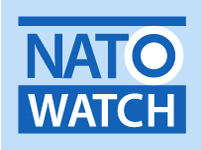By Neil Frazer, for NATO Watch
Officials from over 70 nations andmany international organisations and NGO’s are assembling in Tokyo for a conference of international donors to Afghanistan this weekend. The conference will focus on the funding of Afghan development programs after 2014 when the involvement of the International Security Assistance Force (ISAF) in the country winds down, particularly with the planned end of US combat operations in that year.
Estimates of both the size of the development budget likely to be requested by the Afghan government and the amount of money that will be pledged by donor nations vary. Afghan President Hamid Karzai indicated to Japanese media on Tuesday that the country would need $3.9bn in annual international aid from 2015 till 2014, which the World Bank has indicated is the amount needed to cover a GDP shortfall of $17bn. This non-security related aid comes on top of $4.1bn of security related assistance which NATO nations committed at the NATO Summit in Chicago in May. The amount likely to be pledged by the international community at the conference to Afghan development programs over the course of the next decade is expected to reach $15bn according to reports in Japanese media and the Associated Press.
The successful outcome of the meeting is dependent on several factors; the World Bank has split the challenges faced by the Afghan government into four categories: security; government and donor capacity; governance; and macroeconomic capacity. The second category, government and donor capacity, is central given the Afghan government’s increasing dependence on foreign aid. It is likely that increased pressure on donor nations budgets will result in more scrutiny on the conditions for granting the aid. The Afghan government is likely to be expected to meet benchmarks for political and economic reform to ensure the money is put to effective use.
Writing in Foreign Policy magazine William Byrd outlines three areas which need to be addressed. The first concerns the post-2014 resource envelope - how much money will be made available to the Afghan government from domestic and international sources? When the size of the aid package is settled, it will have to be backed up by a critical mass of pledges or at least indications of pledges from donor nations. The credibility of pledges made by donor nations is particularly important to the second key aspect of “mutual accountability”, ensuring that aid is used responsibly and not lost through corruption or incompetence.
“Mutual accountability” between the Afghan government and international community, with each party holding the other accountable, is seen as essential to the success of both the donor program and domestic reforms. The process could be easily undermined by poor aid commitments that reduce incentives for the Afghan government to remain true to its commitments on governance and economic reforms .The third important area will be the structure within which development aid is delivered and how it is targeted. Byrd emphasises that “focusing on a few key areas with monitorable benchmarks that are in the interest of both Afghanistan and the international community may provide the best hope for success”.
Several NGO’s, including Amnesty International and Human Rights Watch, have emphasised the importance of strengthening the rule of law in Afghanistan and for the government to follow through on its commitments on human rights reforms. Amnesty’s open letter places particular importance on women’s rights and increasing the level of political participation by women. The organisation also highlights the importance of improving the accountability of Afghan and international security forces, arguing that the focus of aid for security sector reforms must not be solely on the ability to provide “hard” security, but also on measures which improve the accountability and legitimacy of the Afghan Security forces. The large number of internally displaced people in Afghanistan, which currently stands at over 500,000, is also singled out by Amnesty as a barrier to sustainable development.
The future exploitation of Afghanistan’s natural resources, which includes announced reserves of minerals, gas and oil to the value of $3 trillion, is expected to be a key driver of growth over the next decade. Hence, the development program will have to balance efficiencies in resource exploitation with fair and sustainable distribution of the income from those resources.
